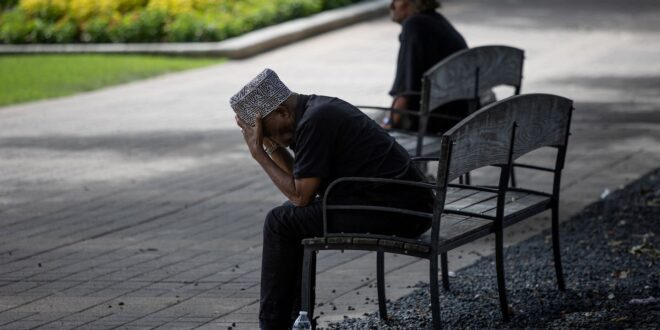The nine — New York, Houston, Los Angeles, Dallas, Chicago, San Antonio, San Diego, Phoenix and Detroit — each have more than 1 million residents enduring temperature increases of 8 degrees or more, because of the heat island effect. That’s according to Climate Central, a nonprofit science and news organization, which has sought to create a broad snapshot of the largest urban populations at risk.
“Anyone who steps out on a sunny sidewalk can feel the difference from when they are in their yard,” Jen Brady, Climate Central senior data analyst, said in an interview. “Obviously, in the city there’s fewer trees, fewer yards and more sunny sidewalks. Those places are going to be warmer. What we’ve tried to do with this analysis is quantify it.”
Forty-one million residents among all nine cities experience the temperature boost, some up to 10 degrees or more, exposing them to higher risks of heat-related illness and more expensive cooling costs, the study found. Climate Central’s analysis did not include demographic data, Brady said, but other organizations such as the D.C. Policy Center have conducted research showing that lower-income communities face disproportionate impact from the heat island effect, partly because their neighborhoods often lack trees.
Brady and her team used census tract-level data from 44 U.S. cities to answer a question they often hear.
“A lot of people have said to us, ‘Is it really getting hotter or is it the urban island effect?’” Brady told The Washington Post. “We really wanted to clarify that the heat island effect is additional heat in the environment, but that climate change is increasing the baseline heat in the world.”
The Climate Central analysis comes as scientists say the world
Check Also
US Supreme Court rules to uphold TikTok ban.
TikTok Ban Upheld by US Supreme Court The US Supreme Court has upheld a law …
 Mind Uncharted Explore. Discover. Learn.
Mind Uncharted Explore. Discover. Learn.




